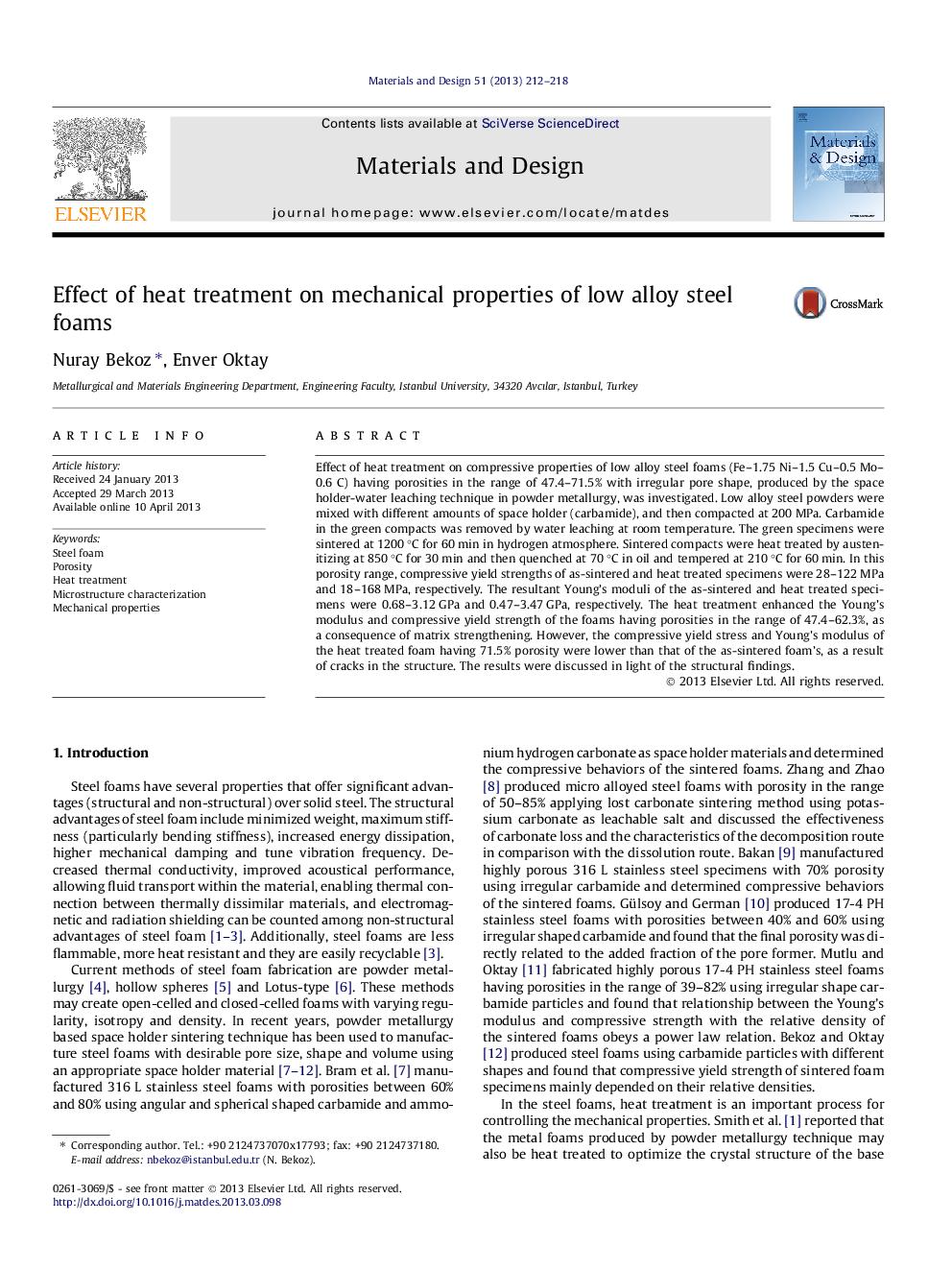| Article ID | Journal | Published Year | Pages | File Type |
|---|---|---|---|---|
| 829830 | Materials & Design (1980-2015) | 2013 | 7 Pages |
•Porosity level did not change by the heat treatment process.•Interconnectivity of the pores increased with the porosity content.•Martensite phase was observed as a result of rapid cooling.•The heat treatment enhanced the mechanical properties of the steel foams.•The compressive yield stress depends on the relative density.
Effect of heat treatment on compressive properties of low alloy steel foams (Fe–1.75 Ni–1.5 Cu–0.5 Mo–0.6 C) having porosities in the range of 47.4–71.5% with irregular pore shape, produced by the space holder-water leaching technique in powder metallurgy, was investigated. Low alloy steel powders were mixed with different amounts of space holder (carbamide), and then compacted at 200 MPa. Carbamide in the green compacts was removed by water leaching at room temperature. The green specimens were sintered at 1200 °C for 60 min in hydrogen atmosphere. Sintered compacts were heat treated by austenitizing at 850 °C for 30 min and then quenched at 70 °C in oil and tempered at 210 °C for 60 min. In this porosity range, compressive yield strengths of as-sintered and heat treated specimens were 28–122 MPa and 18–168 MPa, respectively. The resultant Young’s moduli of the as-sintered and heat treated specimens were 0.68–3.12 GPa and 0.47–3.47 GPa, respectively. The heat treatment enhanced the Young’s modulus and compressive yield strength of the foams having porosities in the range of 47.4–62.3%, as a consequence of matrix strengthening. However, the compressive yield stress and Young’s modulus of the heat treated foam having 71.5% porosity were lower than that of the as-sintered foam’s, as a result of cracks in the structure. The results were discussed in light of the structural findings.
